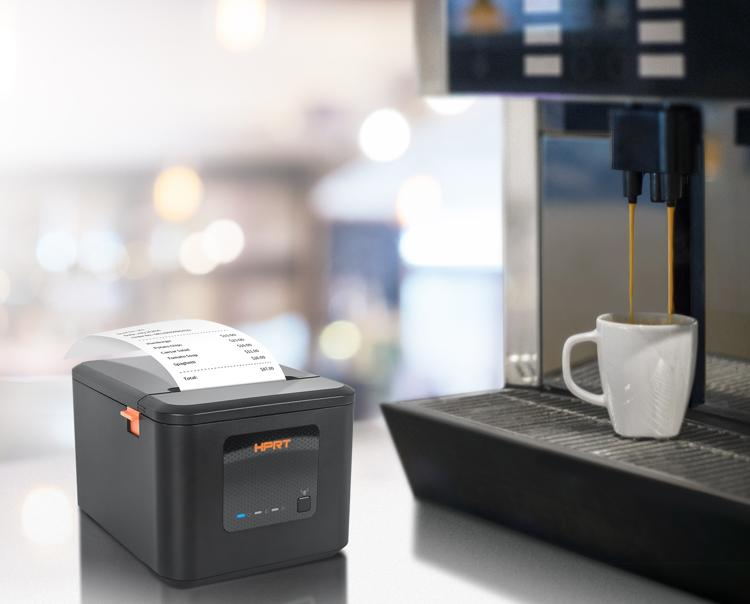Choosing the Best Receipt Printer for Your Business: Thermal, Inkjet and Dot-Matrix
Businesses in various industries, such as retail, hospitality, healthcare, and banking, need to provide their customers with a record of their transactions. To achieve this, receipt printers are used to produce receipts containing details such as the purchased item or service, amount paid, and payment method used. Additionally, receipts are commonly provided during item returns or exchanges. Receipt printers come in various types, including thermal, ink-jet, and dot-matrix, and this article aims to provide a general introduction to these types and their distinct features.
What is a Receipt Printer?
Let’s begin by getting a quick grasp of what a receipt printer is.
A receipt printer is a device that can print small documents such as sales receipts, credit card receipts, invoices, medical prescriptions, and more. They are commonly used in retail stores, gas stations, restaurants, banks, and healthcare facilities.
In different industries, receipt printers have different functions and characteristics. For example, in the healthcare industry, receipt printers can print documents such as medical instructions and precautions, while in the banking industry, they are used to print deposit receipts and withdrawal slips.
Receipt printers on the market can generally be divided into three types according to their printing methods: thermal printers, dot-matrix (impact) printers, and inkjet printers. Next, we will learn about the characteristics of these types of receipt printers one by one.
Thermal Receipt Printers

The 58mm thermal receipt printer we often talk about generally refers to a POS printer that uses direct thermal technology to print receipts. As heat-sensitive paper passes through a heated print head, the heat causes a chemical reaction on the paper’s surface, resulting in the printing of text, barcodes, images, and other information.
The thermal printing process is known for its high-quality results and speedy output, making it a popular choice in various industries, including retail, hospitality, and healthcare. However, it is worth noting that thermal paper is sensitive to heat, light, and humidity, and the printed content may gradually fade over time.
Thermal receipt printers can be divided into two types: mobile and desktop. Among them, the mobile thermal receipt printer has been widely used in modern commerce and logistics industries due to its portability and ease of use, and has attracted more and more attention.
For example, in the logistics and distribution industry, drivers use mobile printers to print orders, transport documents, and other related files, realizing fast printing on mobile devices, which is convenient and efficient, improving delivery efficiency. These printers usually use batteries for power supply, support wireless connections such as Bluetooth and Wi-Fi, and have high resistance to falling and waterproof performance.
Dot Matrix Receipt Printers

The dot-matrix receipt printer, also known as an impact dot-matrix receipt printer, works by using print heads that strike a ribbon and the printing medium to create a dot matrix, which is then used to create the characters or graphics needed for printing.
Impact receipt printers are typically used in scenarios that require large amounts of high-quality, long-term storage text receipts or documents, such as in banking, healthcare, and retail environments. These printers are also suitable for multipart printing, such as printing multi-part invoices, with commonly used multipart papers consisting of 2, 3, or 4 parts.
Dot-matrix receipt printers have a clear printing effect and can use carbon ribbons of different colors for printing, making them quite durable. However, compared to thermal receipt printers, their printing speed is relatively slow, and the carbon ribbon needs to be replaced frequently. Additionally, these printers tend to be noisier than other types of printers.
Inkjet Printers
Inkjet printers use liquid ink sprayed onto paper to create high-quality prints. They are commonly used in retail, hospitality, and healthcare industries for printing receipts, labels, and graphics. Inkjet printers are versatile and can print on a variety of paper types, including glossy, matte, and plain paper.
In comparison to thermal receipt printers, inkjet receipt printers boast high-quality color printing, but they are slower in print speed, have higher costs, and require more maintenance, including the need to replace ink cartridges.
Comparing Receipt Printer Types
Thermal printers are the most widely used receipt printers due to their ease of use, cost-effectiveness, and high printing speed. Dot-matrix receipt printers are best suited for printing documents that require long-term storage or multiple copies, such as those in banks and hospitals. Inkjet receipt printers are great for high-quality printing, such as graphics and logos, but are slower and require more maintenance.
Below is a list of the advantages and disadvantages of these three types of receipt printers.

In terms of connectivity, thermal, dot-matrix, and inkjet printers are typically connected to a computer or receipt terminal via USB, Ethernet, or serial port. Mobile printers, on the other hand, are connected to mobile devices via Bluetooth or Wi-Fi. Some printers also offer additional connectivity options, such as NFC and QR code.
Another important factor to consider when choosing a receipt printer is the paper size and type. Most printers support standard paper sizes, such as 2.25 inches and 3 inches for receipts, but some printers also support larger paper sizes for labels and invoices. The type of paper is also important, as thermal paper is sensitive to heat and light, while carbonless paper requires impact printing.
Frequently Asked Questions about Receipt Printers
a. Do receipt printers require ink?
Thermal receipt printers and dot-matrix receipt printers do not require ink, while inkjet receipt printers do.
b. Can receipt printers print labels?
Receipt printers are not typically suitable for printing labels because they are designed primarily for printing receipts, bills, and small ticket documents. If you need to print labels, it is recommended that you choose a printer specifically designed for label printing.
c. What is the difference between the printing media used in thermal and dot-matrix receipt printers?
Thermal receipt printers use heat-sensitive paper for printing, while dot-matrix receipt printers generally use carbonless paper. Heat-sensitive paper and carbonless paper are commonly used printing media for receipt printers. The main difference between them is that heat-sensitive paper is a type of thermal material that requires heating to produce printing effects, while carbonless paper is covered by a thin layer of carbon powder or other printing pigments and the printing pigment is transferred onto the paper by pressure during printing.
To sum up, there are several different types of receipt printers available, each with their own advantages and disadvantages. While thermal printers are the most popular choice for retail businesses, inkjet and dot matrix printers can be useful in other industries. When choosing a receipt printer, it is important to consider factors such as print speed, print quality, maintenance requirements, and cost per print, in order to select the best option for your business’s specific needs.









